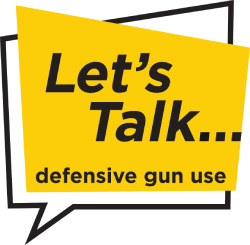First responders are the backbone of our communities, often facing high-stress situations and traumatic events as part of their duty. Over time, these experiences can lead to a significant mental health challenge known as Post-Traumatic Stress Disorder (PTSD). Addressing PTSD with first responders is a matter of compassion for those who serve and is essential for keeping a healthy and effective workforce. In this article, we’ll explore the impact of PTSD in the workplace for first responders, its challenges, and strategies to create a supportive environment for people dealing with PTSD.
What are the signs of PTSD in first responders?
Post-Traumatic Stress Disorder is a mental health condition that can develop after experiencing or witnessing a traumatic event. The nature of their work exposes first responders to distressing situations like accidents, violence, and fatalities, which can lead to the development of Post-Traumatic Stress Disorder. These traumatic experiences can manifest as symptoms of PTSD, including:
Intrusive Memories
Recurring and distressing thoughts, nightmares, or flashbacks of traumatic incidents.
Avoidance Behavior
Efforts to avoid reminders of the trauma, including people, places, or activities associated with the event.
Negative Changes in Mood and Cognition
Feelings of guilt, depression, anxiety, or difficulty concentrating and remembering.
Heightened Arousal
Increased irritability, hypervigilance, and an exaggerated startle response.

How does PTSD affect the workplace?
The presence of PTSD within departments can have several adverse effects on both the affected personnel and the overall workplace environment.
Job Performance
People dealing with PTSD may struggle with decision-making, concentration, and emotional regulation, affecting their ability to perform their duties effectively.
Interpersonal Relationships
The emotional toll of PTSD can strain relationships with colleagues, supervisors, and even family members.
Reduced Coping Skills
People may resort to unhealthy coping mechanisms, such as substance abuse or isolation, without proper support.
Stigma and Barriers to Seeking Help
Fear of stigma and repercussions might discourage people from seeking help for their mental health struggles.
What coping strategies work best for PTSD?
To address PTSD in police departments and with other first responders, it’s crucial to foster a work environment that prioritizes mental health and provides adequate support.
Education and Awareness
Training programs can help raise awareness of PTSD, its symptoms, and the importance of seeking help. This reduces stigma and promotes a culture of understanding.
Access to Counseling Services
Offering confidential and specialized counseling services ensures people have a safe space to discuss their experiences and receive professional support.
Peer Support Programs
Establishing peer support networks allows people to talk to colleagues who have experienced similar situations, creating a sense of camaraderie and understanding.
Regular Mental Health Check-ins
Incorporating routine mental health assessments can help identify signs of PTSD early and provide timely interventions.
Flexible Work Policies
Allowing personnel to take breaks, seek support, and access resources when needed can reduce stress and promote a healthier work-life balance.
Resilience Training
Providing personnel with training in stress management and resilience-building techniques equips them with the tools to cope effectively with traumatic experiences.
Addressing PTSD in first responders requires a proactive approach that acknowledges people’s challenges and provides a comprehensive support system. By prioritizing mental health awareness, breaking down stigma, and fostering a supportive work environment, departments can ensure the well-being of their personnel while maintaining a resilient and effective workforce. Ultimately, this approach benefits individual first responders and contributes to safer and stronger communities.


